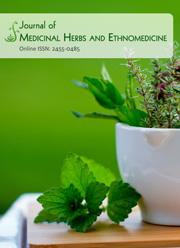Checklist of medicinal plants used by traditional women for maternal health care in Lagos State, Nigeria
DOI:
https://doi.org/10.25081/jmhe.2024.v10.8637Keywords:
Medicinal Plants, Maternal Health Care, Lagos State, NigeriaAbstract
Traditional women in Lagos State, Southwest, Nigeria have been using medicinal plants for maternal health care since time immemorial. However, there is no proper documentation of medicinal plants used in maternal health care, as information is passed from generation to generation orally. This study aimed at the identification and documentation of medicinal plants used in Lagos, Nigeria for maternal health care. Ethnobotanical studies were carried out in six local government areas namely, Agege, Alimosho, Badagry, Ejigbo, Mushin and Ojo. A Semi-structured questionnaire was designed to obtain information from 300 respondents, 50 from each local government area. The respondents included herbal merchants, herbal medicine practitioners, midwives, and traditional birth attendants. Information obtained included the names of the plants, plant parts used, mode of preparation and administration and dosage of the medicinal herbs. Forty-five (45) plants belonging to twenty-three (23) families were identified and documented in the study area. Most of the reported plants belong to the Fabaceae (13.52%), Malvaceae (8.41%) and Annonaceae (6.67%) families. Kigelia africana, Caliandra portoricensis, Nauclea latifolia and Securidata longepedunculata had the highest Relative Frequency of Citation (RFC) and Fidelity Level (FL) of 0.96; 100% and 0.82; 100%, 0.92; 100 % and 0.78; 100% respectively. Most of the reported plants (73.47%) were herbs and shrubs and about 62.68% of the surveyed plants were wild. Leaves were the most frequently used (72.74%) plant’s part. Most of the herbs (80.45 %) were prepared as decoctions and preparations were mostly administered orally (88.64%). Strategies suggested to conserve the surveyed plants include the cultivation of medicinal plants to prevent their extinction.
Downloads
References
Adediwura, F., & Arowojolu, A. (2019). Maternal Mortality in Nigeria: The Crucial Third Delay and the Potential of Medicinal Plants. Open Journal of Obstetrics and Gynecology, 9(10), 1367-1386.
Adibe, M. O. (2009). Prevalence of Concurrent Use of Herbal and Synthetic Medicines among Outpatients in a Mission Hospital in Nigeria. International Journal of Drug Development and Research, 1(1), 60-66.
Burkill, H. M. (1985). The useful plants of West tropical Africa. (2nd ed.). Kew, UK: Royal Botanic Gardens.
Fakeye, T. O. Adisa, R., & Musa, I. E. (2009). Attitude and Use of Herbal Medicines among Pregnant Women in Nigeria. BMC Complementary and Alternative Medicine, 9, 53. https://doi.org/10.1186/1472-6882-9-53
Gruca, M., & Blach-Overgaard, A. (2018) Medicinal flora of Nigeria: A Showcase of 100 Nigerian Medicinal Plants. Journal of Ethnopharmacology, 220, 244-269.
Kankara, S. S., Ibrahim, M. H., & Mustafa, M., & Go, R. (2015). Ethnobotanical Survey of Medicinal Plants Used for Traditional Maternal Healthcare in Katsina State, Nigeria. South African Journal of Botany, 97, 166- 175. https://doi.org/10.1016/j.sajb.2015.01.007
Oreagba, I. A., Oshikoya, K. A., & Amachree, M. (2011). Herbal Medicine Use among Urban Residents in Lagos, Nigeria. BMC Complementary Alternative Medicine, 11, 117. https://doi.org/10.1186/1472-6882-11-117
UNICEF. (2009). Division of Communication. Tracking Progress on Child and Maternal Nutrition: a Survival and Development Priority.
WHO. (2005). World Health Organization. National policy on traditional medicine and regulation of herbal medicines- report of a WHO global survey. Retrieved from http://apps.who.int/medicinedocs/pdf/s7916e/s7916e.pdf
WHO. (2017). World Health Organization. Maternal Mortality in Nigeria: Facts and Figures. Retrieved from https://www.who.int/nigeria/news/detail/05-11-2019-Qmaternal-mortality-in-nigeria-facts-and-figures
Published
How to Cite
Issue
Section
Copyright (c) 2024 O. J. Sharaibi, O. K. Oluwa, K. T. Omolokun, A. A. Ogbe, A. O. Adebayo

This work is licensed under a Creative Commons Attribution 4.0 International License.



 .
. 